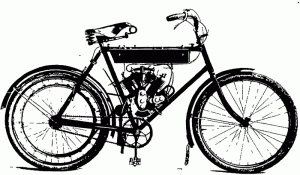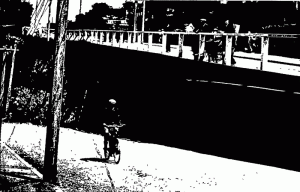Recently one of our registered readers sent me a link to the Papers Past website. Now McSnotty and I are aware of the immense amount of work that is being undertaken at the National Library in digitising New Zealands history but we were unaware of the Papers Past website that is part of the National Librarys efforts. Ive done a little trawling about and thought I’d bring you this article . Its an example of the type of information that is available if only you know where to look.
Thanks to Sue for steering me in the right direction.
This article, repoduced here, was originally published in a national newspaper called Progress on December 2nd 1907. Progress was initially published by Wellington patent attorneys, Baldwin & Rayward . Its first issue in 1905 promised to “treat of progress in engineering, processes, inventions, industrial work and economics as applied to any of these subjects.”
To see the original article visit the Papers Past website here

Some little time ago we prophesied that the light motor cycle was the motor of the future and that it was a matter of a short time only when other motors on the principle of the marvellous little “Motosacoche ” would find their way upon the market. Our prophesy is early fulfilled m the advent of the “Mountaineer” motor cycle, also the invention and workmanship of the Swiss mechanic who has in the ” Motosacoche,” and now in the “Mountaineer,” shown himself as unrivalled in the production of rational motor cycles as he has in the manufacture of watches.
At first glance the “Mountaineer” gives one the impression of an exquisitely-finished model engine, constructed purely for exhibition purposes it is so light, so neat, and so magnificently built. Upon closer examination however, this idea quickly gives place to one of intense admiration for the genius displayed in its construction, it being at once apparent that the engine is built for work ; with the metal only where the strength is needed.
It is twin-cylinder, arranged in the now universal adopted V type. The ignition is by means of an extremely small and simple magneto on the Sims Bosch principle. The carburetter is of novel type and is automatic. The benzine tank, holding three quarts, is sufficient for 100 miles, thus proving great economy in running. The belt is adjusted by means of the style of jockey pulley to which the “Motosacoche” owes a great part of its splendid hill-climbing capabilities. The total control consists of one lever so placed on the handlebar as to be immediately under the control of the forefinger. This lever regulates the speed from a walking-pace to the unlooked-for-gait of 40 miles per hour. The weight of the equipment is 29 ½ lbs., making the total motor cycle under 65 lbs., while the h.p. is 2 ½ .
A practical test of the “Mountaineer” was provided by Mr. Carne Bidwill, of Featherston, who kindly undertook to show us what this machine could do. Messrs. Hardie Shaw, F. T. Macdonald, the editor of Progress, and others repaired to Boulcott street hill, which is severe not only on account of its steadily-increasing grades, but also for the awkward turns and twists which would effectively test the machine for ease of control and flexibility. Mr. Bidwill elected not only to climb Boulcott street at a fast or slow pace, but, after negotiating the grade, to turn up Wellington Terrace and continue the ascent without dismounting. A most difficult turn on a difficult grade.
At the given signal Mr. Bidwill mounted, and it quickly became apparent that Boulcott street had no difficulties for the ” Mountaineer.” Our illustration shows Mr. Bidwill on his ” Mountaineer ” near the top and before the turn on to Wellington Terrace. At the top Mr. Bidwill switched off and turning up the terrace continued the journey without the slightest pedal assistance and at any pace he pleased. This certainly proves extraordinary flexibility, as it was necessary to pick up speed on a severe grade ; Mr. Bidwill’s weight being about 12 ½ stone. Afterwards tests were carried out to Brooklyn, the top of Abel Smith street, round by the gaol, Woolcombe street, etc., all of which were the easiest of victims, the pedals not once being used.
The “Mountaineer” was fitted with the usual gear, which gives 40 miles per hour on the flat. One of the most notable features of the trial was the entire absence of noise. Altogether the trials must be classed as wonderfully satisfactory. Cycle and Motor supplies Limited, of Wellington are New Zealand wholesale representatives.
Thanks to the National Library and Papers Past for doing an awsome job.


